The Corsair Force LS SSD Series is designed to be a value-oriented alternative largely for global-market consumers wanting to upgrade their PCs or Notebook at a reasonable price. Though Corsair is mostly known for their excellent and quality-built memory modules, they were one of the first SSD manufacturers to enter the retail market and have ultimately earned a reputation as building some of the best SSDs available, as well as providing drives that cover the whole price and performance spectrum. The Force LS is placed on the lower part of this spectrum and is considered labeled as a budget SSD by Corsair.
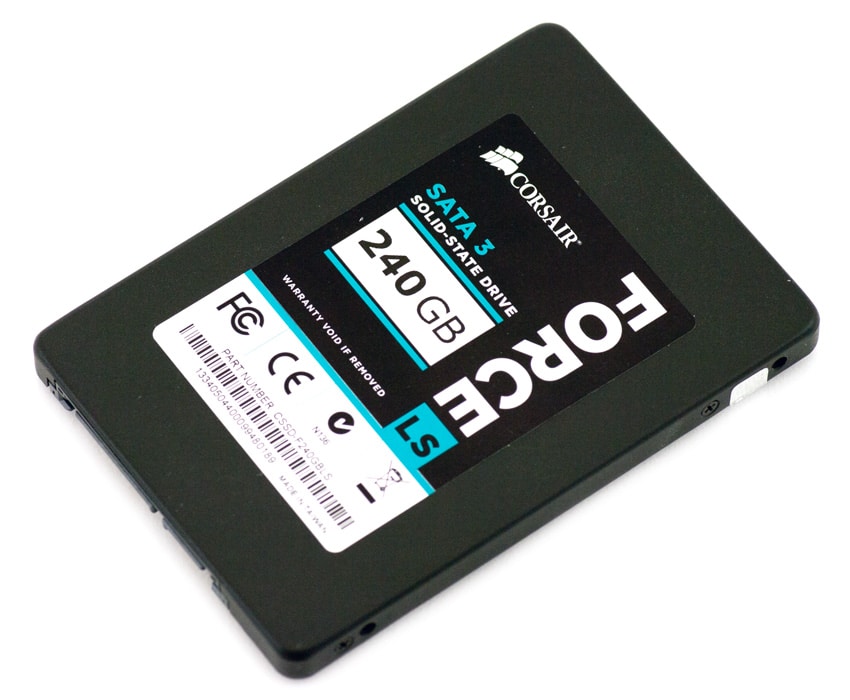
Corsair has released previous SSDs with a variety of controllers inside including SandForce, Marvell and LAMD. Proving themselves controller agnostic again, they have decided to partner with Phison for the LS. The Force LS was built to try and fit the mainstream performance at a reasonable price role. As the controller is a key cost point of any SSD, the selection of the Phison PS3108 controller, which is supposed to be an economical solution with respectable performance numbers, makes a good deal of sense.
The Corsair Force LS is available in capacities of 60 GB, 120 GB, and 240 GB. The unit we are reviewing is the 240GB, which is available for approximately $200 online. Unfortunately, the Force LS Series is not widely available in the US as it’s largely intended for global markets; though it may find sporadic distribution in North America.
Specifications
- Capacities: 60GB, 120GB, 240GB
- Controller: Phison PS3108
- NAND: 19nm Toshiba MLC
- Performance:
- Sequential Read: 560MB/s
- Sequential Write: 535MB/s
- 4KB Random Read: 50,000 IOPS
- 4KB Random Write: 62,000 IOPS
- Power consumption
- Max: 4.6W
- Idle: 0.6W
- Warranty: 3 years
Design and Build
The Force LS Series SSD is enclosed by an all-metal top casing, making it a durable drive that keeps the circuit board well-protected from the elements. The top cover’s label comprises a nice combination of black, white and turquoise and is secured to the bottom cover with four small Phillips-head screws on each corner.
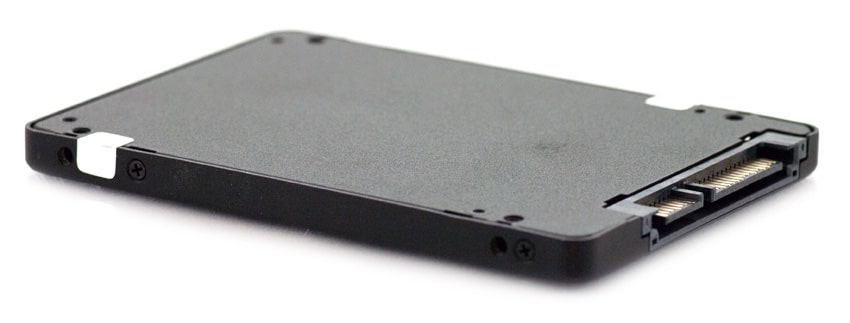
The drive conforms to the dimensions of a 2.5" form factor. The height of the Force LS Series SSD is only 7 mm, which makes it compatible with Ultrabooks.
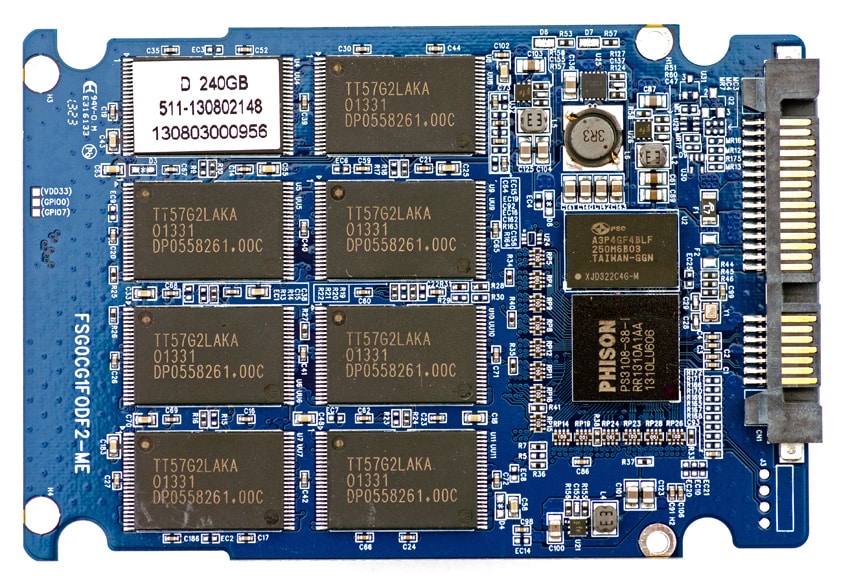
Like SSDs nowadays, the Force LS uses the SATA 6 Gbp/s interface. Though it is compatible with older SATA standards, it will function at a reduced performance.
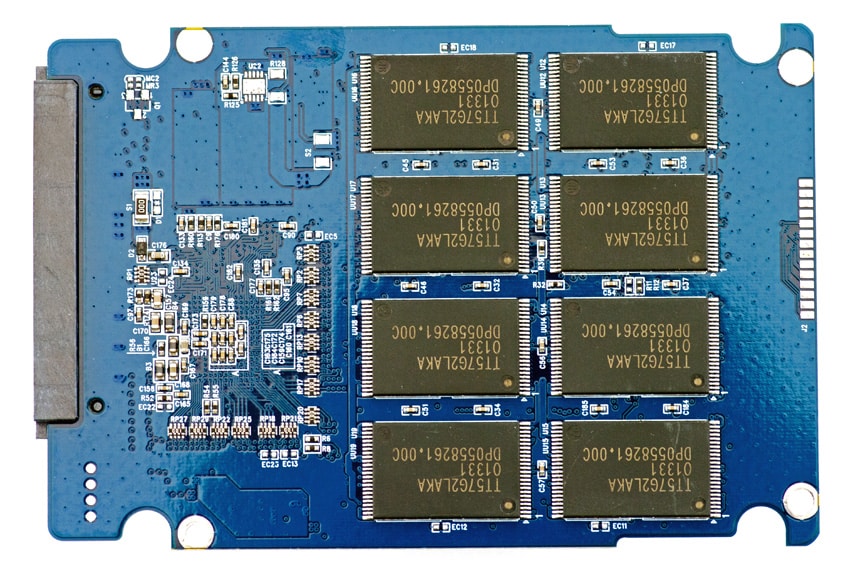
Removing the four Phillips-head screws reveals the Force LS, which consists of 16 NAND packages–eight channels per side. This works out to be 16GB per package with each package having two 8GB dies.
Consumer Synthetic Benchmarks
All consumer SSD benchmarks are conducted with the mid-range StorageReview Consumer Testing Platform. The comparables used for the review below include:
- Crucial M500 (480GB, Marvell 9187, Micron 20nm MLC NAND, SATA)
- OCZ Vector (256GB, Indilinx IDX500M00-BC Barefoot 3, 25nm MLC NAND, SATA)
- Samsung SSD 840 EVO (250GB, 400MHz Samsung 3-core MCX controller, Samsung 1x nm Toggle NAND Flash, SATA)
- Seagate 600 SSD (120GB, Link-a-Media LM87800, 19nm MLC NAND, SATA)
- OCZ Vertex 450 (256GB, Indilinx Barefoot 3 BF3-M10, 20nm MLC NAND, SATA)
- OCZ Vector 150 240GB (lndilinx Barefoot 3, 19nm Toshiba Multi-Level Cell, SATA)
- OCZ Vector 150 120GB (lndilinx Barefoot 3, 19nm Toshiba Multi-Level Cell, SATA)
All IOMeter figures are represented as binary figures for MB/s speeds.
In our first test measuring 2MB sequential performance, the Force LS measured 509.8MB/s read and 381.8MB/s write, outperforming all of the competition in the read column, but coming in dead last by a noticeable margin in write activity performance.
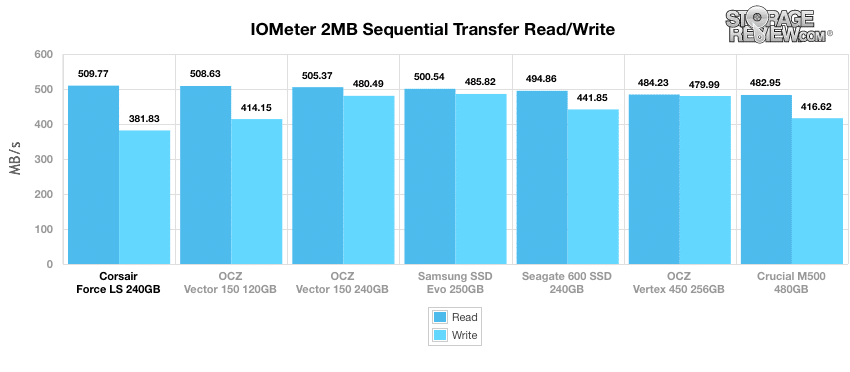
In our next test looking at 2MB random transfer performance, the Force LS measured 396.6 MB/s read and 380.2MB/s write, which is right at the bottom of the pack.
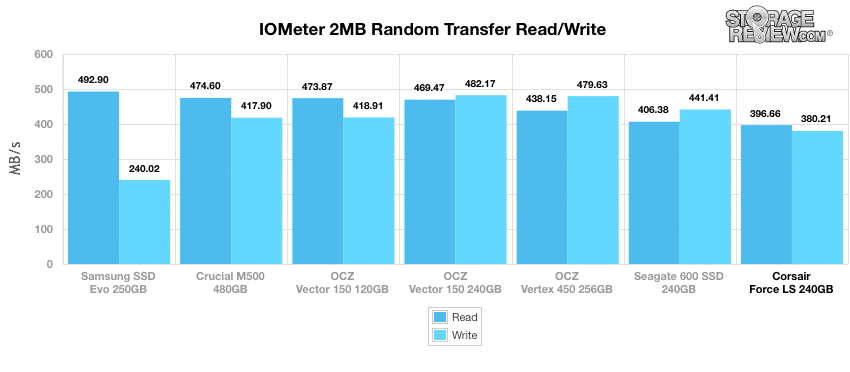
Switching to smaller 4K random transfers, the Force LS only measured in at 5,885 IOPS read activity but came in top place in the write column with a blistering 21,198 IOPS write activity.
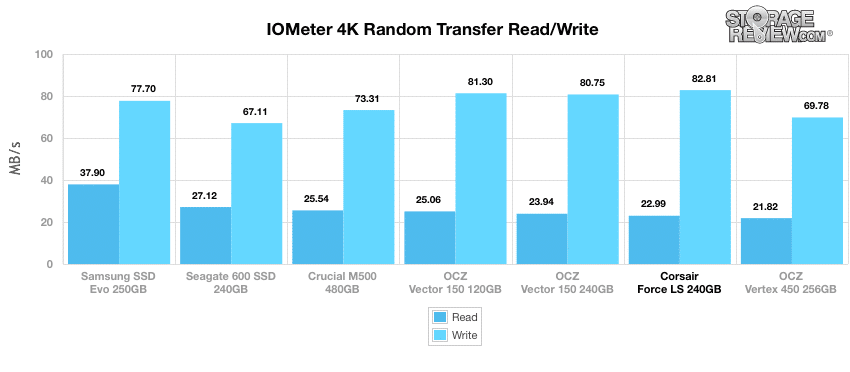
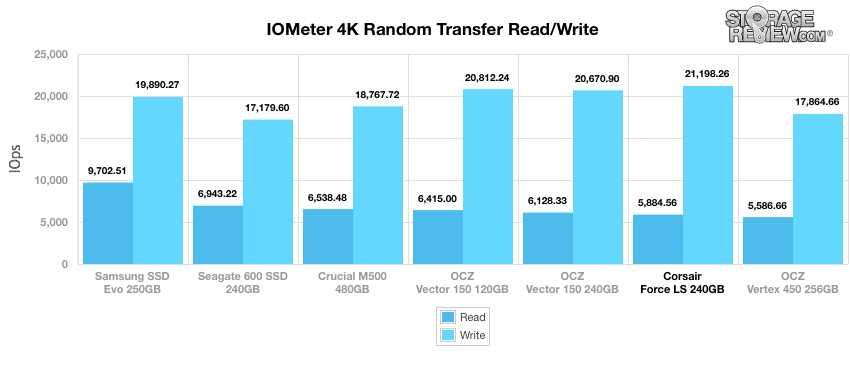
In our next test, we shift to a smaller 4k random workload with 100% read activity that scales from 1QD to 64QD. In this setting Force LS scaled from 5,882 IOPS to only 34,477 IOPS.
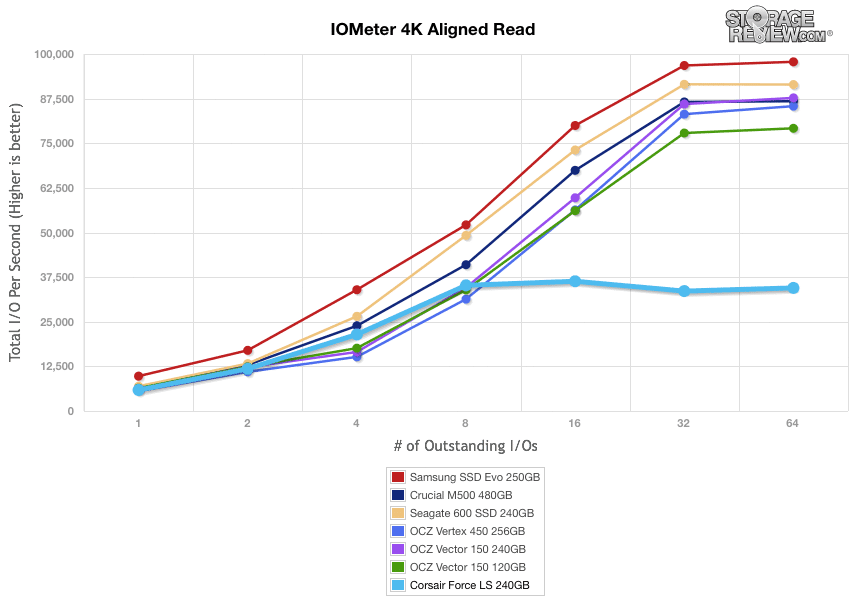
Shifting focus to write activity, the Force LS still performed poorly compared the other drives measuring 19,946 IOPS at QD1 and peaking at just 55,332 IOPS.
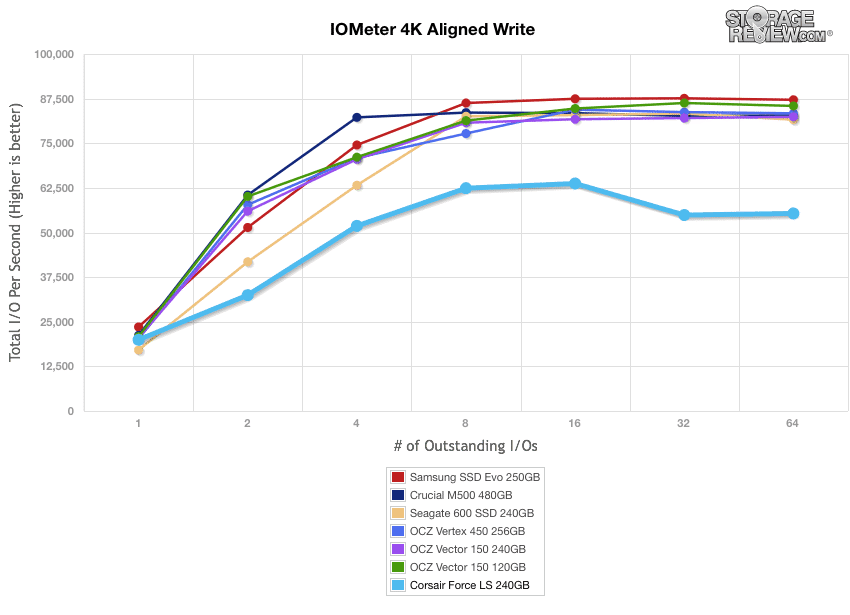
Comparing average write latency between each consumer SSD, the Force LS ranked at the top of the pack with a time of 0.047ms average latency with a peak latency of 3.352ms.
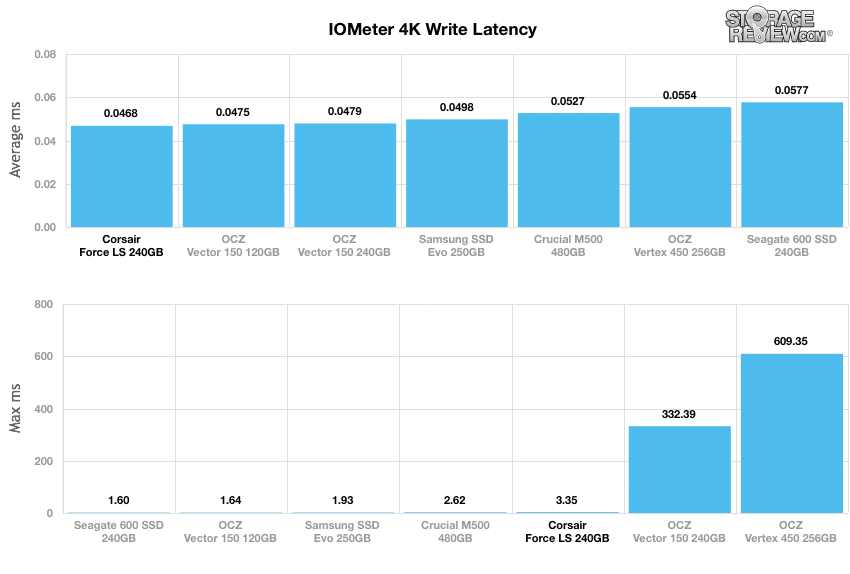
Our last series of synthetic benchmarks compare the hard drives in a series of server mixed-workloads with a queue depth of ranging from 1 to 128. Each of our server profile tests has a strong preference towards read activity, ranging from 67% read with our database profile to 100% read in our web server profile. In all of our mixed workloads, the LS Force ranked last in all of the profiles.
The first is our database profile; with a 67% read and 33% write workload mix primarily centered on 8K transfer sizes. In the test, the Force LS clocked in at 3600 IOPS in Q1 and reached 15,672 IOPS by Q128.
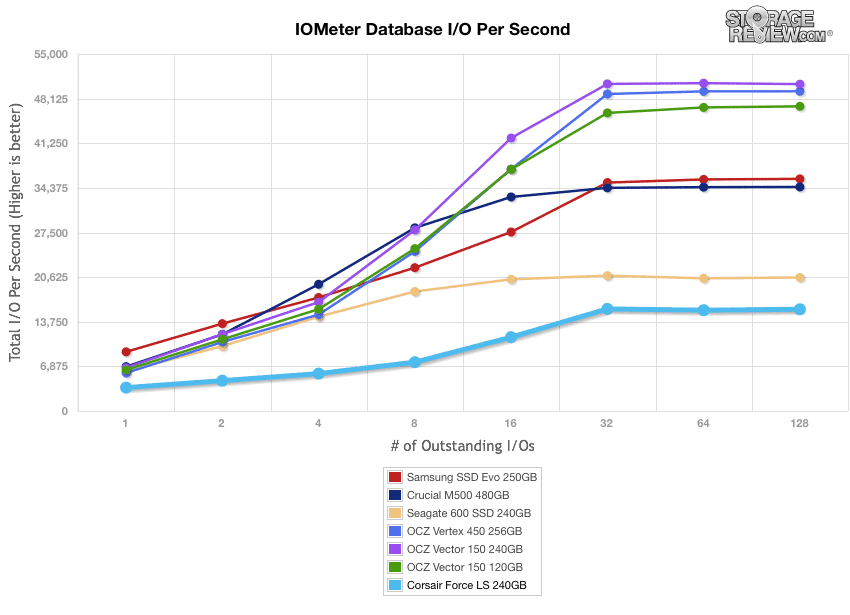
The next profile looks at a file server, with 80% read and 20% write workload spread out over multiple transfer sizes ranging from 512-byte to 64KB. The Corsair Force LS delivered Q1 throughput of 3,419 IOPS and 13,360 IOPS by Q128 trailing the other drives significantly
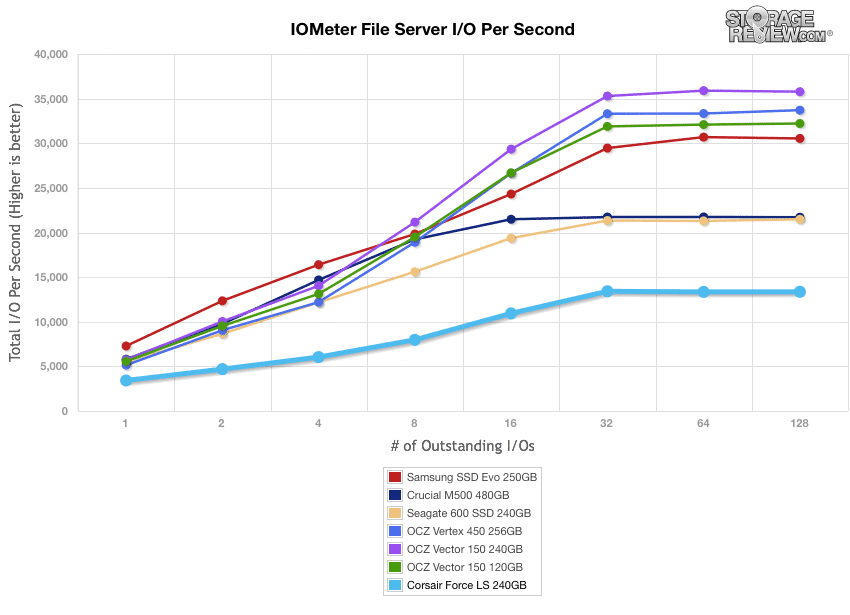
Our web server profile is read-only with a spread of transfer sizes from 512-byte to 512KB.
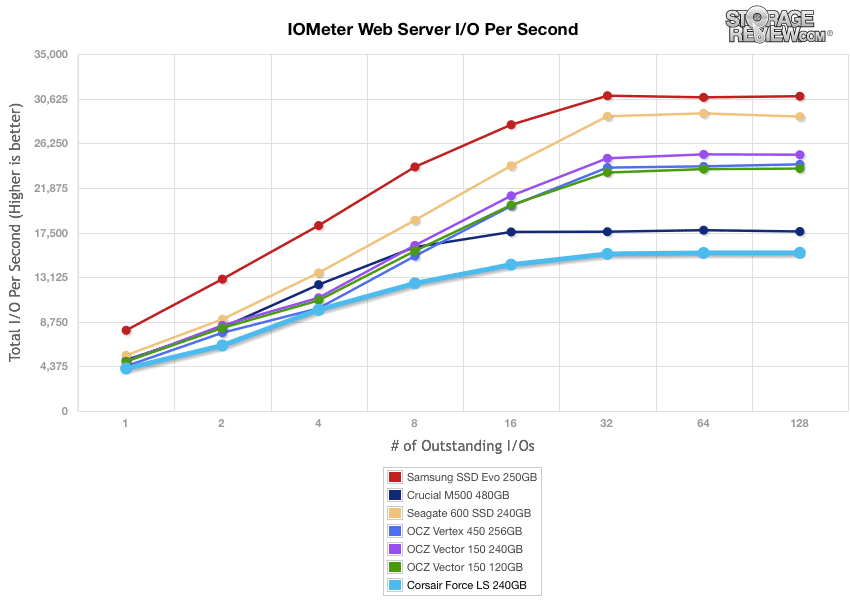
The last profile looks at workstation activity, with a 20% write and 80% read mixture using 8K transfers. In QD1, the Force LS drive started at the 3,534 IOPS mark and only reached 17,628 by Q128.
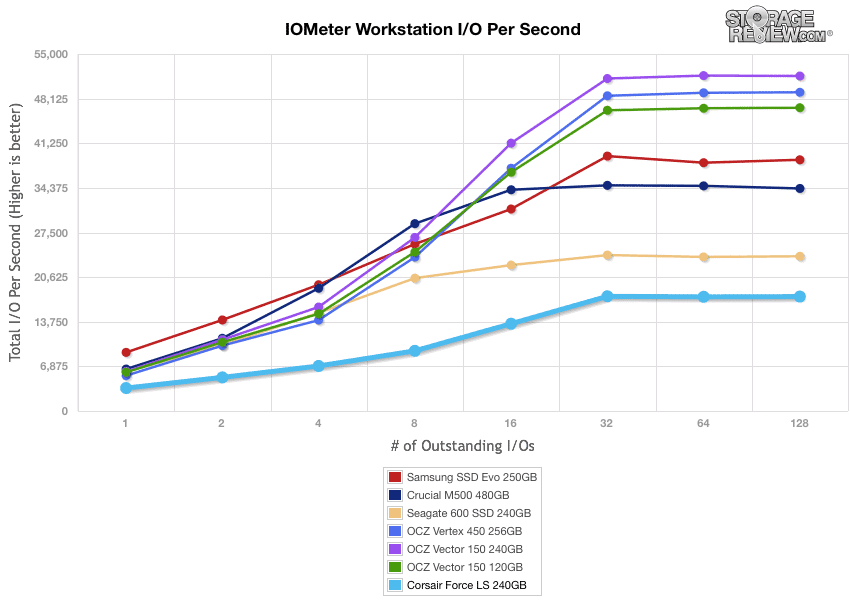
Consumer Real-World Benchmarks
For the average consumer, trying to translate random 4K write speeds into an everyday situation is pretty difficult. It helps when comparing drives in every setting possible, but it doesn't exactly work out into faster everyday usage or better game loading times. For this reason we turned to our StorageMark 2010 traces, which include HTPC, Productivity, and Gaming traces to help readers find out how a drive might rank under these conditions.
The first real-life test is our HTPC scenario. In this test we include: playing one 720P HD movie in Media Player Classic, one 480P SD movie playing in VLC, three movies downloading simultaneously through iTunes, and one 1080i HDTV stream being recorded through Windows Media Center over a 15 minute period. Higher IOps and MB/s rates with lower latency times are preferred. In this trace we recorded 2,986MB being written to the drive and 1,924MB being read.
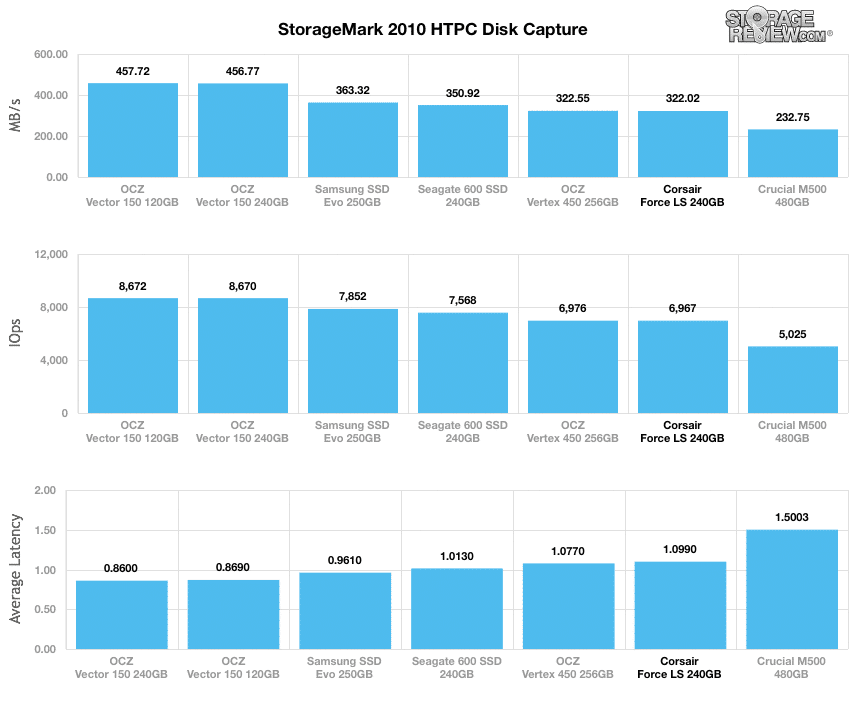
In our HTPC profile, the Force LS clocked in at 6967 IOPS. Additionally, it boasted only 322.0MB/s with an average latency of 1.10ms.
Our second real-life test covers disk activity in a productivity scenario. For all intents and purposes this test shows drive performance under normal daily activity for most users. This test includes: a three hour period operating in an office productivity environment with 32-bit Vista running Outlook 2007 connected to an Exchange server, web browsing using Chrome and IE8, editing files within Office 2007, viewing PDFs in Adobe Reader, and an hour of local music playback with two hours of additional online music via Pandora. In this trace we recorded 4,830MB being written to the drive and 2,758MB being read.
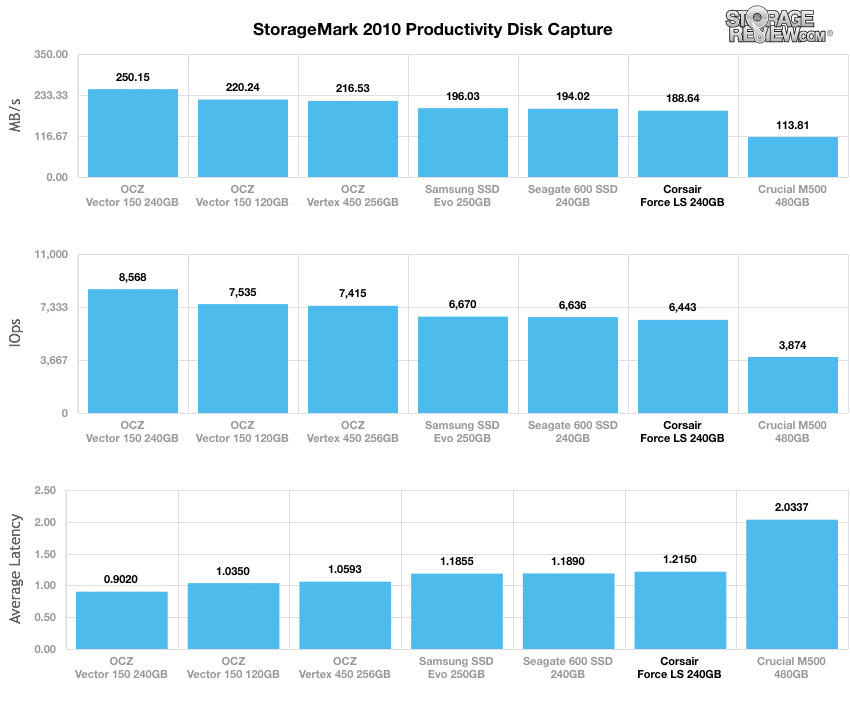
In our Productivity trace, the Force LS registered 188.6MB/s, which ranked 2nd last and just above the Crucial M500.
Our third real-life test covers disk activity in a gaming environment. Unlike the HTPC or Productivity trace, this one relies heavily on the read performance of a drive. To give a simple breakdown of read/write percentages, the HTPC test is 64% write, 36% read, the Productivity test is 59% write and 41% read, while the gaming trace is 6% write and 94% read. The test consists of a Windows 7 Ultimate 64-bit system pre-configured with Steam, with Grand Theft Auto 4, Left 4 Dead 2, and Mass Effect 2 already downloaded and installed. The trace captures the heavy read activity of each game loading from the start, as well as textures as the game progresses. In this trace we recorded 426MB being written to the drive and 7,235MB being read.
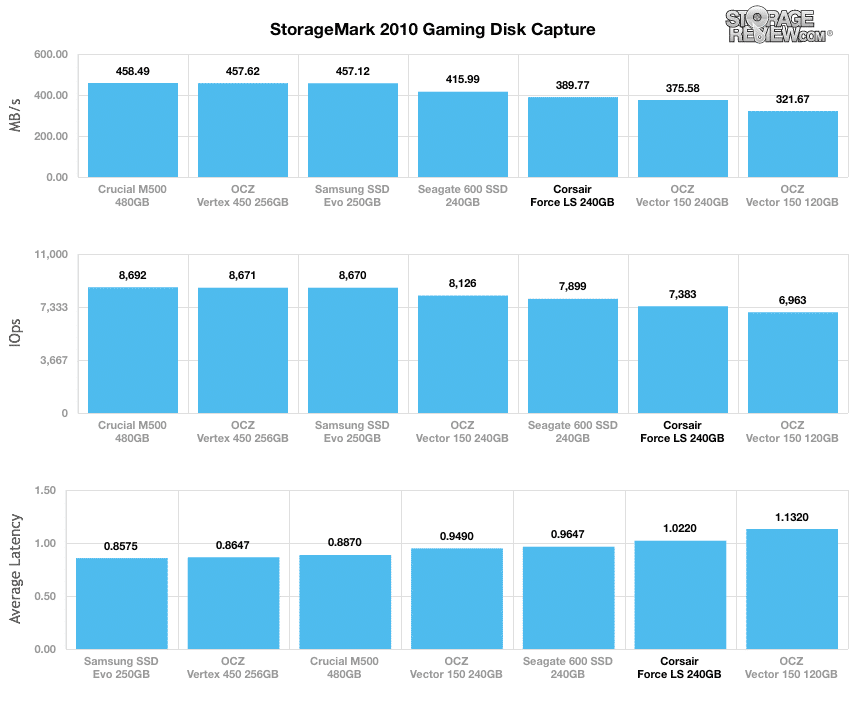
In our read-intensive Gaming trace, Force LS produced only 389.6MB/s but with a good average latency of 1.02ms.
Power Consumption
As SSDs spend much of their time in the idle state, low idle power consumption is a key factor in overall SSD power management.

In our tests, we measured idle power consumption from the Force LS at 0.30W as well as 4.58W and 2.36W during sequential write and read activity respectively.
Conclusion
The Corsair ships in 60 GB, 120 GB, and 240 GB capacities and is the company's first mid-range capacity, value-line SSD. As we predicted, the Corsair Force LS sometimes struggled performance-wise to compete with most of the high-end drive comparables with its Phison PS3108 controller, showing a vast difference in performance numbers in certain areas. However, it did perform surprisingly well in the sequential read column, beating its competition handily. The Corsair Force LS SSD is positioning itself into a competitive market, however it’s quite obvious that the Phison controller is starting to take big strides to catch up with the competition.
Although the overall performance of the Force LS wasn't on par with the higher-end units, it did do well for its category and while this SSD can be recommended to an average user, it must be cheaper (or priced similar to other budget drives like the 840 EVO) to warrant the purchase. Saving a few dollars really isn’t enough to merit the "budget" label on its own. With an international price of $200 for the 240GB version, it's not an inexpensive drive, especially when looking at performance per dollar or price per GB. Consumers can also sometimes find a good sale on some of the older generation higher-end drives that might end up less than the street price of the Corsair Force LS. This all being said, pricing is still a little difficult to evaluate since the Force Series LS SSDs are not yet even available in North America and are not even listed on the US Corsair website. Ultimately the buying decision is going to come down to price. If the LS can be had for significantly less than other current generation drives, the average user who's on a HDD now will be thrilled with the step up in performance. If it maintains price-parity with other leading SSDs, including the higher-end offerings from Corsair, buyers are best suited spending a little more for the better performing drive.
Pros
- Solid, nice looking design
- Impressive read performance
Cons
- Price seems too high for a budget label
Bottom Line
The Corsair LS comes from a trusted name in the SSD business and when priced materially less than other current generation SSDs, makes a lot of sense for buyers who want more out of their existing hard-drive based machines.




 Amazon
Amazon